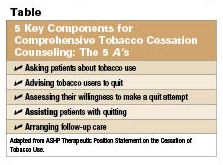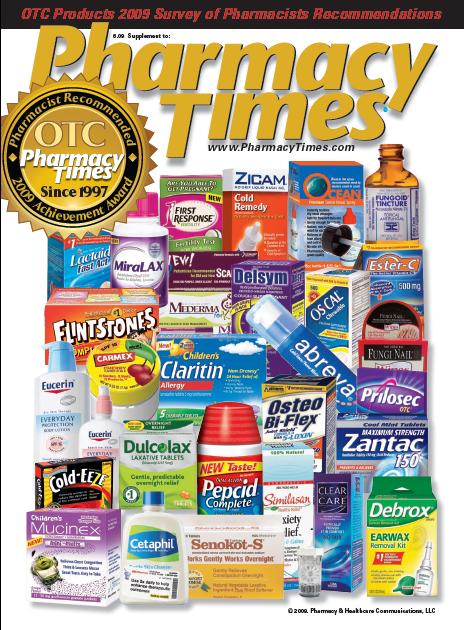Publication
Article
OTC Guide
Clearing the Smoke: Pharmacists Can Help
Author(s):
Assistant Editor
A ruthless killer is lurking within many pharmacies throughout the country. As pharmacists are dispensing medications, counseling, and offering pa--tient education, the insidious destroyer lies in wait at the store’s front end. An equal opportunity killer, cigarettes can trap patients in a seemingly impenetrable hold, nullifying the benefits that should be seen from medication adherence and following the recommendations of pharmacists and other health care providers. The good news is, with a variety of OTC smoking cessation products available, the deadly hold of cigarettes can be broken—a bit of guidance from pharmacists can provide the help that smokers need to get on the road to freedom.
“As medication experts, pharmacists are uniquely positioned to help patients stop using tobacco products,” stated American Society of Health-System Pharmacists (ASHP) President Kevin J. Colgan. “Pharmacists in hospitals and health systems are read-ily accessible and have the necessary medication expertise to counsel patients as they take steps to end this dangerous habit.”
It is a dangerous habit, indeed. Throughout the country, smoking causes an estimated 443,000 premature deaths annually, ac-cording to the Centers for Disease Control and Prevention. The staggering death toll comes with monetary costs—$193 billion in direct health care expenditures and productivity losses annually. With smoking bans becoming the rule instead of the exception and a recent 62-cent federal tax increase on tobacco, even some smokers who ignore health risks are more willing to try quitting. “Research tells us that a 10% increase in the price of a pack of cigarettes can reduce youth smoking by 7% and adult smoking up to 5%,” stated Harold Wimmer, chief executive officer of the American Lung Association of the Upper Midwest.
Willingness to quit does not guarantee the ability to do so. According to a position statement published by ASHP, most smokers who try to quit undertake the goal without help and end up failing. On the other hand, those who receive intervention from a clini-cian are about twice as likely to quit. Similarly, smokers using OTC nicotine replacement therapy (NRT) are twice as likely to quit, compared with those receiving a placebo.
The statistics serve to back up ASHP’s urging of pharmacists and other health care providers to become more involved in help-ing tobacco users to snuff out the habit through both behavioral and pharmacologic means. Considering the trend of patients opting for OTC products over prescription medications as a way of coping with economic woes, many of those looking to quit will likely choose an OTC NRT. With products such as the transdermal patch, gum, lozenges, and nasal sprays on the market, options are available to suit every patient’s needs.
According to ASHP, pharmacists should address the issue of smoking during every clinical encounter where appropriate, whether it is encouraging a patient to quit, guiding the selection of an NRT product, or following up on a patient’s progress (Table).

Of course, time constraints do not always allow for lengthy interactions with patients, but taking a minute to counsel a smoker can make the difference in helping the individual quit for good.
Beyond matching smokers with the right OTC NRT product, pharmacists can arm patients with other knowledge that will make quitting smoking less of an uphill climb. ASHP suggests that pharmacists familiarize themselves with community resources for tobacco cessation and pass the information on to patients. From local support groups to national hotlines or Web sites, the quitting smoker can turn to countless places to make their NRT therapy a success.
For 30 years, pharmacists and others in the field have been vocal opponents of tobacco products being sold within pharmacies, according to ASHP. The organization also opposes the oxymoronic juxtaposition of tobacco products being sold at one end of a store while medications are being dispensed at the other. Although change has been slow going, pharmacists can do their part to make a difference by offering help to patients trying to kick the habit:
“ASHP believes that the active involvement of health care providers is crucial to effective tobacco control at the population level and that the pharmacy profession—as a primary and accessible point of contact between the health care system and the public (including the medically underserved)—has a unique opportunity to serve as a cornerstone for the nation’s tobacco-control efforts.”







